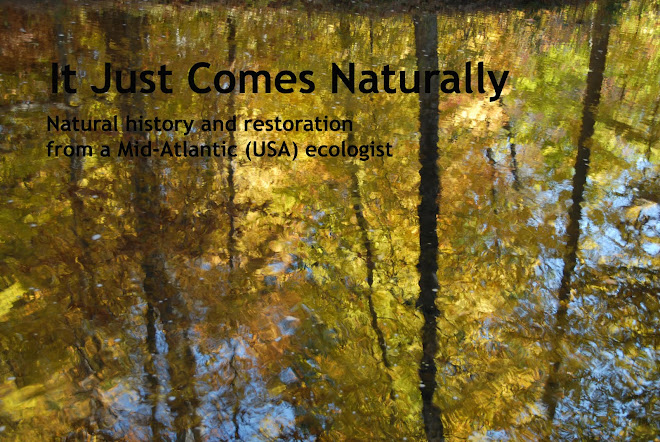At a friend's suggestion, Kali and I visited the Edwin B. Forsythe National Wildlife Refuge's Brigantine Unit just north of Atlantic City, New Jersey, on New Year's Eve. The day was perfect for a tour of the 8-mile Wildlife Drive: mostly sunny, with temperatures in the balmy (for New Year's Eve) upper 50's F.
Atlantic City across the marshes
This unit of the refuge consists of a series of shallow impoundments whose water levels are manipulated by the refuge managers to provide habitat primarily for waterfowl. Outside the impoundments, the remainder of the refuge offers upland pine forest habitat, grasslands, and large expenses of unmanaged salt marsh. It's the impoundments that attract the waterfowl (and the human observers), though.
A male Pintail leaving a wake
We added two birds to our life lists while we slowly cruised the Wildlife Drive, making frequent stops to get better look at the birds: a Peregrine Falcon perched on an Osprey nesting platform enjoying lunch, and many Brants (a species of goose). In fact, we didn't realize that we had added Brants to our lists until we got home and looked at some of the images I took; birds that we had tentatively identified as Canada Geese in the field (tentatively, because they were darker than the Canada Geese with which we are familiar, and because we didn't give them much additional notice after we "identified" them) turned out to be Brants, and there were lots of them.
The refuge also hosted thousands of Snow Geese--I believe the register at the Visitor Center said there were 4,000 on the ponds. We also observed an adult Bald Eagle that caused a flurry of crazed activity among the waterfowl when it swooped over the ponds and then landed on another Osprey breeding platform.
A few of the thousands of Snow Geese overwintering in the refuge
Kali and I agreed that it was great to get away for the day, even though the trip to the shore took two hours each way. Plus, it gave us an excuse to try a new pair of binoculars that we were given for Christmas: a pair of Canon 10X binoculars with an image stabilizer. I would have been skeptical about the value of the stabilizer if I'd been considering new binoculars, but it was truly wonderful. After Kali reluctantly tried the binoculars for the first time, I couldn't get them back from her for the rest of the day.









































